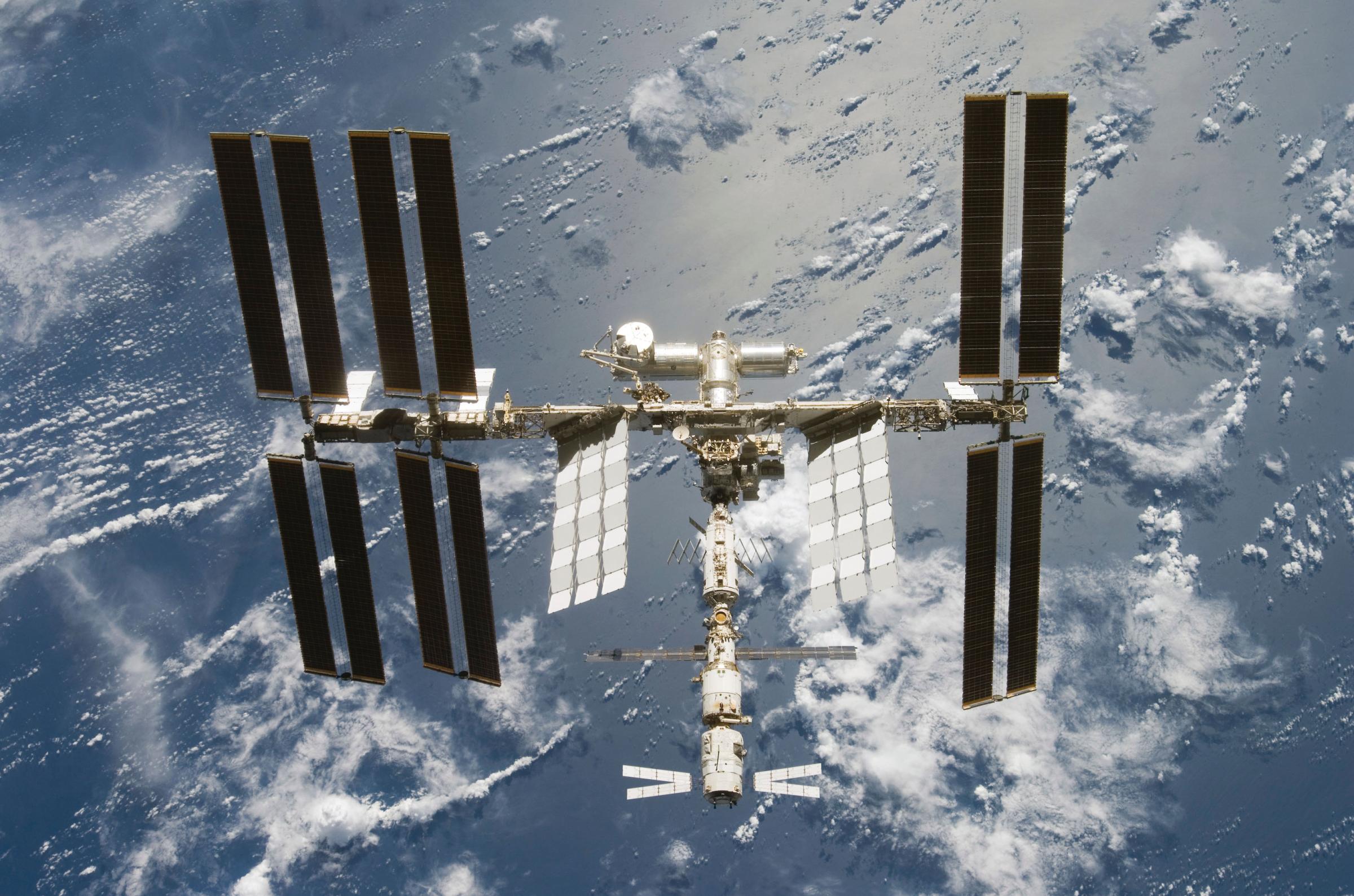
The crew of the International Space Station is scrambling to fix a small hole that is causing air to slowly leak into space, NASA said Thursday.
Flight controllers for the station saw signs of the pressure leak on Wednesday evening. They allowed the crew of the ISS, Expedition 56, to sleep since they were not in immediate danger, according to NASA. After the crew woke up, the flight controllers started the process to find the leak’s location.
The station is regularly hit by micrometeorite debris; spacewalking astronauts report that after nearly 20 years aloft, the exterior hull looks as if it was hit by birdshot.
The danger is greater in the region the station orbits—about 250 miles above Earth. That area is in the thick of the low-Earth orbit debris belt, where most spacecraft fly and thus most space junk is routinely shed. A direct hit by a large chunk of debris is not common, but it could be catastrophic, which is why astronauts and cosmonauts rehearse for the possibility.
During the 2015 to 2016 window in which American astronaut Scott Kelly and Russian cosmonaut Misha Kornienko spent a year in orbit, the crew had to shelter in place in the Soyuz return vehicle when NASA and Roscosmos, the Russian space agency, detected a cloud of space junk heading the station’s way. The danger passed with no damage to the ship.
This time, the breach is in the Soyuz itself, which could prevent the crew from using it as lifeboat and escape vehicle. The Soyuz is the venerable, three-person Russian spacecraft that has been flying since 1967. The ships are now used to deliver crew to the ISS. They are then docked onto the space station and are used again to return the crew to Earth. For now, the leak is small—only 2 mm—but any such break in the bulkhead can lead to complete depressurization.

The crew is, for now, taking the low-tech step of packing junk—rags or other trash—against the site of the leak, where the suction of the outrushing air will hold it in place. They will make a permanent repair using an epoxy sealant.
A NASA spokesperson confirmed to TIME via phone that the depressurization on the space station did not pose an immediate threat to crew safety, and added: “It was not a full depressurization event, it was a small leak that was tracked to a docked Soyuz.”
Depressurization in orbit has happened before. In 1997, the Mir space station was stuck by an incoming Progress cargo vehicle, causing a break in one of the Mir’s modules. That breach was much bigger than the current one, but the crew managed to slam the hatch to the affected module and thus isolate the leak.
The severity of any leak can be determined by the crew in a very basic way. If your ears don’t pop, there’s been no significant break. If they pop a little and hurt a little there’s been a small break. The fear is a break severe enough to rupture an eardrum and cause severe pain. That, in the worse cases, would be the last thing the crew would ever feel.
– With reporting by Jonathan Woods
More Must-Reads From TIME
- The 100 Most Influential People of 2024
- The Revolution of Yulia Navalnaya
- 6 Compliments That Land Every Time
- Stop Looking for Your Forever Home
- If You're Dating Right Now , You're Brave: Column
- The AI That Could Heal a Divided Internet
- Fallout Is a Brilliant Model for the Future of Video Game Adaptations
- Want Weekly Recs on What to Watch, Read, and More? Sign Up for Worth Your Time
Write to Jeffrey Kluger at jeffrey.kluger@time.com and Mahita Gajanan at mahita.gajanan@time.com